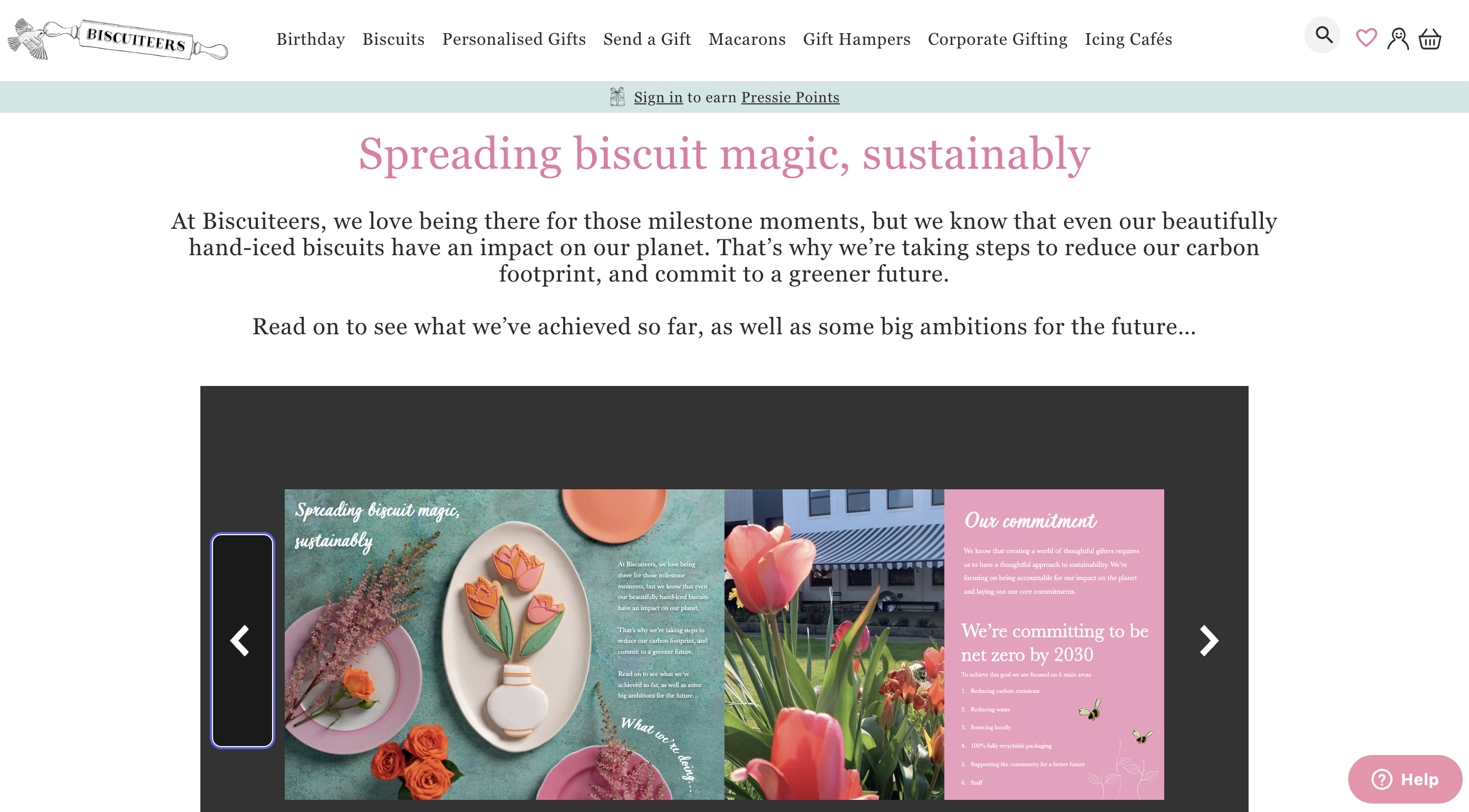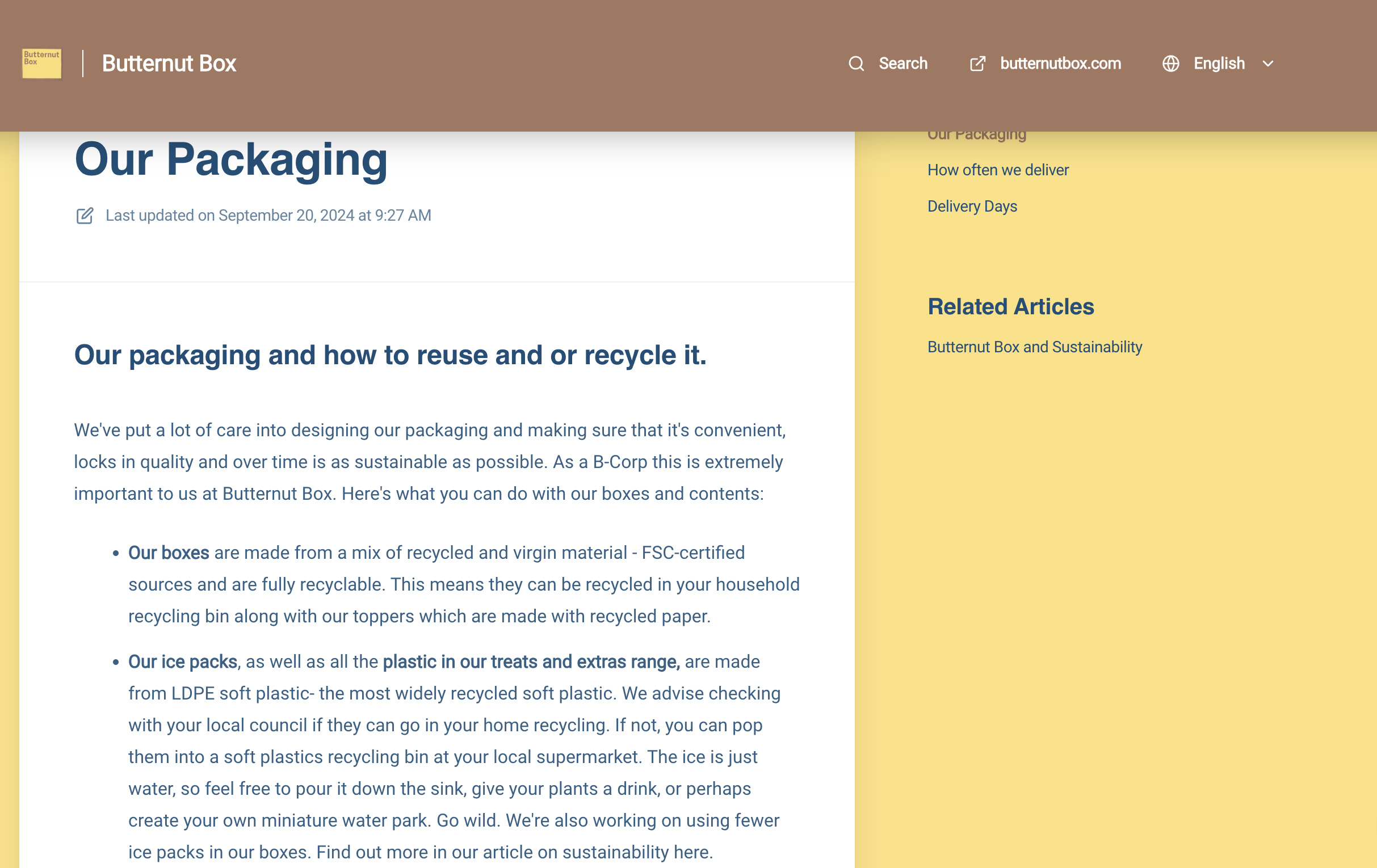This article was written by eCommerce experts at leading delivery management provider Scurri. To streamline your delivery management, get in touch with Scurri today!
In today’s world, sustainability is no longer just a buzzword. It’s a necessity for businesses, including those selling online. With the rise of online shopping, consumers are becoming more conscious of the environmental impacts of their purchasing choices. As an eCommerce business, it’s important to adapt to these shifts. Sustainability is about both the environment and the future of your business.
Here are some actionable strategies to make your eCommerce website more sustainable:
Here are some actionable strategies to make your eCommerce website more sustainable:
1. Focus on Economic Growth Through Sustainability

It’s important to recognize that economic growth and sustainability are not mutually exclusive. Many consumers today are willing to pay a premium for sustainable products and services.
By implementing these sustainable practices on your eCommerce site, you not only reduce environmental harm, but also position your business to capture this growing market. Sustainable companies often see long-term financial benefits, including increased customer loyalty, lower costs, and the ability to tap into new markets.
By implementing these sustainable practices on your eCommerce site, you not only reduce environmental harm, but also position your business to capture this growing market. Sustainable companies often see long-term financial benefits, including increased customer loyalty, lower costs, and the ability to tap into new markets.
2. Use Eco-Friendly Web Hosting for Your eCommerce Website

One of the first steps in making your eCommerce website more environmentally sustainable is by selecting a green hosting provider. Many data centres use enormous amounts of energy to keep servers running, and a growing number of these facilities are moving toward renewable energy.
Opt for a hosting service that uses green energy or offsets its carbon footprint through renewable sources. This small change can reduce your website’s environmental impact significantly.
Opt for a hosting service that uses green energy or offsets its carbon footprint through renewable sources. This small change can reduce your website’s environmental impact significantly.
3. Optimise Your eCommerce Website's Design for Energy Efficiency

A website’s design and functionality can also influence its carbon footprint. Heavy graphics, long loading times, and poor site architecture require more energy and computing power.
To start selling sustainably, streamline your eCommerce site by optimising images, minimising the use of plugins, and using clean, minimalist designs. Not only does this reduce energy consumption, but it also improves user experience by speeding up the checkout process.
To start selling sustainably, streamline your eCommerce site by optimising images, minimising the use of plugins, and using clean, minimalist designs. Not only does this reduce energy consumption, but it also improves user experience by speeding up the checkout process.
4. Educate Customers on Sustainability

Customers are more likely to support brands that align with their values. Use your eCommerce site to educate customers about the steps you’re taking to be more environmentally sustainable. Create blog posts, social media content, or even short videos explaining the environmental benefits of choosing your products and services. Encouraging sustainability in the checkout process, such as allowing customers to opt for carbon-offset shipping, can also create a more engaged and loyal customer base.
For example, Scurri customer Biscuiteers has dedicated an entire page on their website to their sustainability efforts. They’ve set an ambitious goal to achieve net zero emissions by 2030 and outline a clear strategy to reach it. Their focus includes reducing carbon emissions, minimizing waste, sourcing sustainably, offering fully recyclable packaging, and actively supporting their community and staff. These initiatives reflect their commitment to sustainability and responsible business practices, while also educating the public about sustainability more broadly.
For example, Scurri customer Biscuiteers has dedicated an entire page on their website to their sustainability efforts. They’ve set an ambitious goal to achieve net zero emissions by 2030 and outline a clear strategy to reach it. Their focus includes reducing carbon emissions, minimizing waste, sourcing sustainably, offering fully recyclable packaging, and actively supporting their community and staff. These initiatives reflect their commitment to sustainability and responsible business practices, while also educating the public about sustainability more broadly.
5. Promote Sustainable Products on Your eCommerce Website

Focus on sourcing and promoting sustainable products that are made from natural or recycled materials on your eCommerce website. If your site includes items that are locally produced or fair-trade, emphasise these in your product descriptions.
Sustainable products resonate well with modern consumers and can become a key differentiator for your online shop.
Sustainable products resonate well with modern consumers and can become a key differentiator for your online shop.
6. Reduce Returns with Better Product Information

Returns are a significant environmental burden in online shopping, as they contribute to increased transportation emissions and waste. One way to reduce returns is by providing accurate and detailed product information on your eCommerce website. Quality images, videos, customer reviews, and size guides can help customers make more informed purchasing decisions, leading to fewer returns.
This not only helps the environment, but also improves your profit margins and customer satisfaction.
For example, Scurri customer Fairfax & Favor offers comprehensive product information for each of their items. They provide multiple images, including close-ups, full views, and model shots, along with videos showcasing many of their products. Detailed descriptions, size guides, and information on product features and craftsmanship are also included. Additionally, they offer guidance on product care, ensuring customers have all the information they need to make informed purchases.
This not only helps the environment, but also improves your profit margins and customer satisfaction.
For example, Scurri customer Fairfax & Favor offers comprehensive product information for each of their items. They provide multiple images, including close-ups, full views, and model shots, along with videos showcasing many of their products. Detailed descriptions, size guides, and information on product features and craftsmanship are also included. Additionally, they offer guidance on product care, ensuring customers have all the information they need to make informed purchases.
7. Use Recyclable or Minimal Packaging

Another significant way to make your eCommerce site more sustainable is through packaging. Single-use plastics and excessive packaging are harmful to the environment and do not align with today’s sustainable shopping expectations. Shift to biodegradable, recyclable, or reusable packaging materials. You could also offer an option for customers to choose minimal packaging at checkout.
Highlight your commitment to natural and eco-friendly packaging on your website and product pages, so customers know that your brand values sustainability. This not only reduces waste, but also strengthens your reputation as a forward-thinking retailer.
For example, Scurri customer Butternut Box has a page on their website focused on educating customers about their sustainable packaging. They highlight their recyclable boxes, made partly from recycled materials, and provide guidance on how to recycle their ice packs and dispose of WooLCool insulation. Additionally, they offer details on their BPA-free, dog-safe food pouches. While these pouches aren’t yet recyclable, Butternut Box emphasises their commitment to finding a safe, recyclable solution in the future.
Highlight your commitment to natural and eco-friendly packaging on your website and product pages, so customers know that your brand values sustainability. This not only reduces waste, but also strengthens your reputation as a forward-thinking retailer.
For example, Scurri customer Butternut Box has a page on their website focused on educating customers about their sustainable packaging. They highlight their recyclable boxes, made partly from recycled materials, and provide guidance on how to recycle their ice packs and dispose of WooLCool insulation. Additionally, they offer details on their BPA-free, dog-safe food pouches. While these pouches aren’t yet recyclable, Butternut Box emphasises their commitment to finding a safe, recyclable solution in the future.
8. Start Selling Sustainably with Scurri Connect

Shipping is a key component of an eco-friendly eCommerce operation. Scurri Connect can help link your eCommerce website with carriers who share your values, making it easier to reduce the carbon footprint of your shipping processes.
By connecting with sustainable carriers, you can ensure that your commitment to the environment extends from your ecommerce site to the moment the product reaches the customer.
By connecting with sustainable carriers, you can ensure that your commitment to the environment extends from your ecommerce site to the moment the product reaches the customer.
9. Offer Sustainable Shipping Options at the Checkout Point of Your eCommerce Website

Shipping is one of the most significant contributors to the carbon footprint of online shopping. Offering sustainable shipping options is crucial for a more eco-friendly ecommerce website. Partner with carriers who use electric vehicles, carbon-neutral shipping options, or even bicycle delivery for local orders. By doing this, not only are you reducing your environmental impact, but you’re also offering a service that appeals to eco-conscious customers.
To ensure a seamless experience, integrate these shipping options directly into your checkout process, giving customers the choice to select greener delivery methods.
To ensure a seamless experience, integrate these shipping options directly into your checkout process, giving customers the choice to select greener delivery methods.
10. Implement a Recycling or Buyback Program

To further minimise waste, consider implementing a recycling or buyback program. Allow customers to return used products, packaging, or other materials for recycling or repurposing. This encourages responsible consumption and positions your ecommerce site as a leader in sustainability.
If possible, reward customers for participating in these programs with discounts or loyalty points, encouraging repeat purchases and building a strong customer relationship centred around shared values.
If possible, reward customers for participating in these programs with discounts or loyalty points, encouraging repeat purchases and building a strong customer relationship centred around shared values.
11. Measure and Improve Continuously

Sustainability is an ongoing process that requires constant evaluation. Regularly assess the environmental impact of your eCommerce website by tracking metrics such as energy consumption, packaging waste, or shipping emissions.
Use these insights to identify areas for improvement. Technology tools, such as carbon footprint calculators, can help you stay on track and make data-driven decisions about the sustainability of your online shop.
Use these insights to identify areas for improvement. Technology tools, such as carbon footprint calculators, can help you stay on track and make data-driven decisions about the sustainability of your online shop.
Beyond your eCommerce webite
While optimising your eCommerce website for sustainability is an important step in reducing your carbon footprint, what happens during the order fulfilment phase is of critical importance also.
By connecting to our wide range of carriers who offer sustainable delivery and using our reporting dashboards that optimise last mile delivery, retailers can improve the sustainability of their operations.
Discover more about our wide range of carriers and carrier services.
